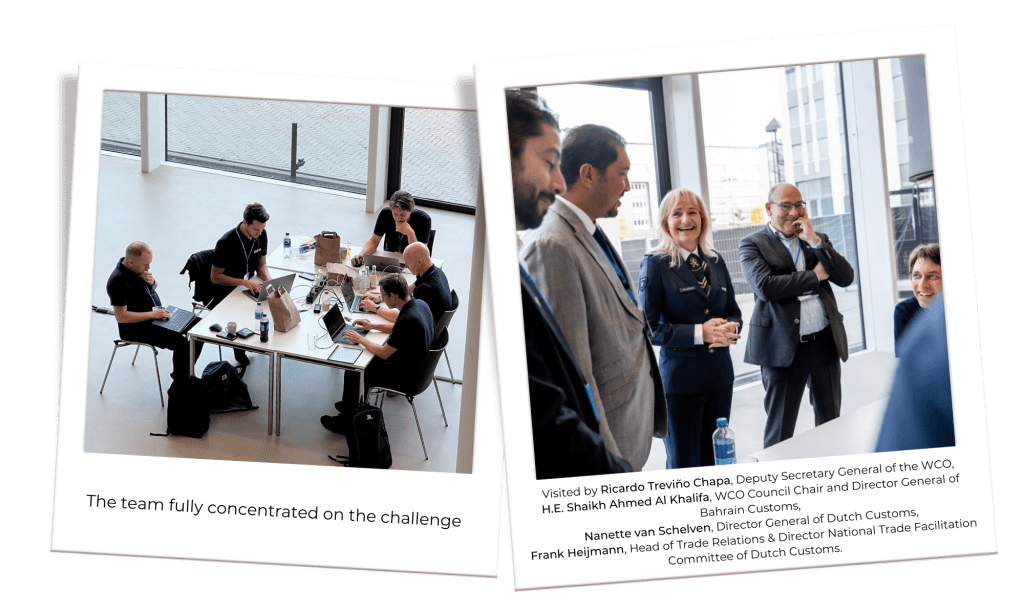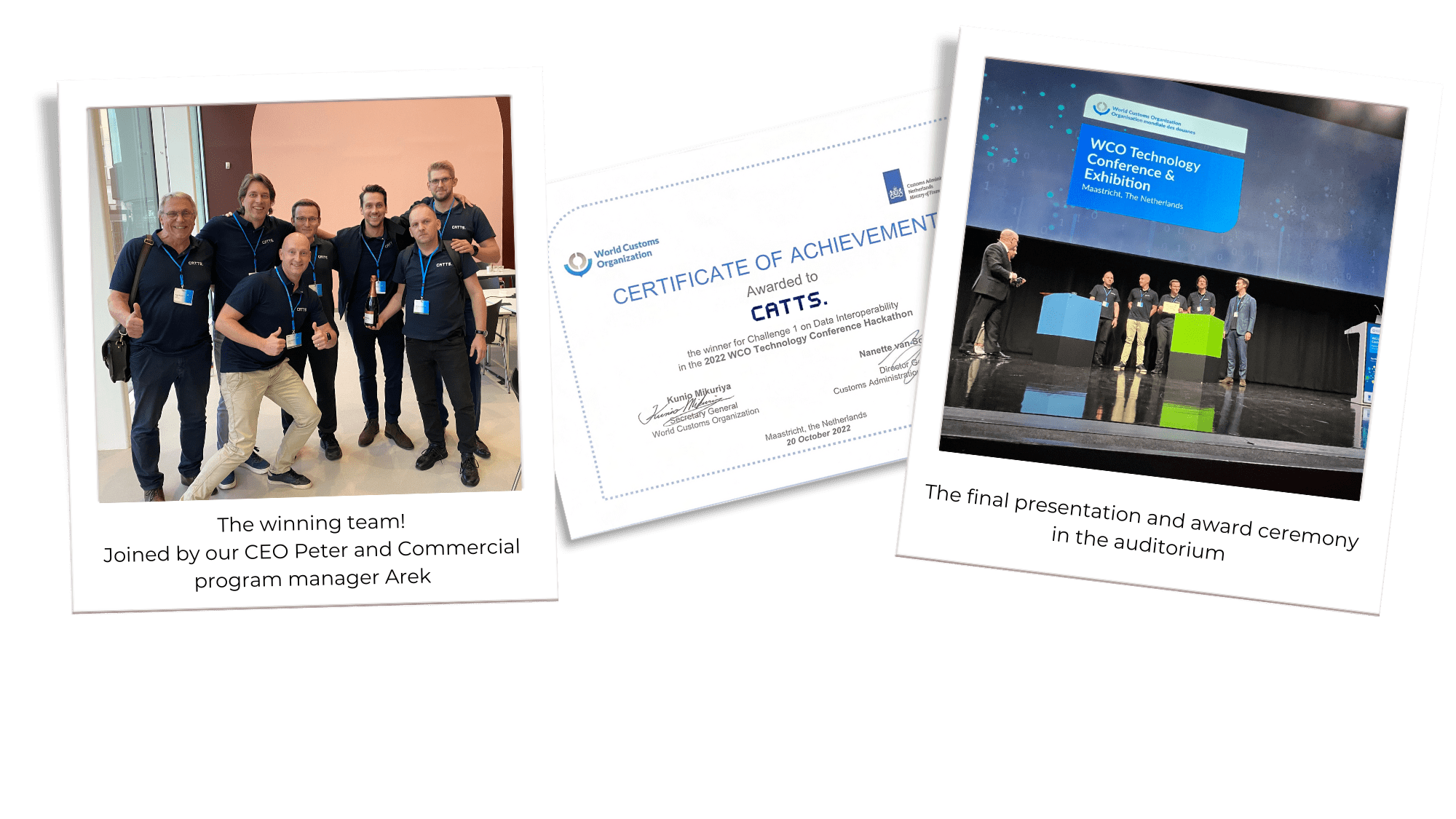CATTS Wins the WCO Technology Hackathon!
The winning team members Koen, Frank, and Jeroen, who formed the software development brains, and Mariusz and Nick, who provided their customs expertise and functional application perspective, did an amazing job in winning the Hackathon. In our previous announcement, we explained more about the hackathon organised by the World Customs Organization and Dutch Customs and the challenges presented.
Which of the Hackathon challenges did you choose?
We decided to focus on the first challenge: Data Interoperability. The objective was to present a concept of how data can be used to speed up customs processes and how customs risk analysis can be improved. As we normally work on automating the customs process for manufacturers or logistics service providers, approaching this from the perspective of the customs authorities added an extra dimension to the challenge.

What kind of information was provided and how did you approach the challenge?
We were given a dataset consisting of logistics data and customs data for 10 containers and only 6 hours to work on a proof of concept. At first, we collectively analyzed the data sets provided as part of the challenge. We then transposed these data sets into a workable database. After that, we defined a Use Case and Proof of Concept.
During this moment of brainstorming, our team was visited by some of the top-ranking officers of both the WCO and Dutch customs. We explained we intended to use data to build a risk analysis tool, combining origin, routing, and product data. The conversation that followed, especially the global trade challenges explained by WCO Council Chair, H.E. Shaikh Ahmed Al Khalifa, was a confirmation that we were on the right path.
How did you develop the proof of concept?
We started by building a data model, consisting of data sourced from the customs and logistics data provided as part of the challenge, combined with data from the OECD Illicit trade report on Misuse of Containerized Maritime Shipping in the Global Trade of Counterfeits. Finally, we identified the HS Chapters from the Harmonised System for all product categories mentioned in the OECD report.
On top of this data model, we developed a risk scoring model by associating a risk weight to each of the product categories most commonly associated with counterfeit trade: Perfumery & Cosmetics, Leather articles and handbags, Clothing, Electronics & electronic equipment and Toys & Games. The same exercise was done for the top-producing countries as well as potential transit ports for each of these product categories.
The proof of concept we pitched, coined Container of Interest, was able to calculate the risk of the sample container data in a formula similar to how Google page ranking works. The information was presented in a simple user interface showing different risk categories and rankings per container. A customs officer would be able to use the tool to see all incoming containers ranked on risk level. This would help them decide which containers are worth inspecting, based on which indicators, and what to look for.

How was the winner selected?
The other participants were data scientists from Norwegian Customs, a Dutch Customs IT team, and a French team of developers specialised in customs software.
Each team had a unique take on the challenge and presented their proof of concept to a jury composed of members of Dutch Customs, the World Customs Organisation, and the Dutch association Topsector Logistiek. The jury needed some time to decide, but in the end, they chose our team as the winning one because of the way we used not only the provided data sources that were given as part of the challenge but also combined this data with additional external data sources.
On the final day of the WCO Technology Conference, there was an award ceremony and we got to present our proof of concept to a large audience. The team is excited to apply the developments and insights gained during this challenge to our broker management and customs control tower solution EPOS.
Interested in how our champions can help you use software to enable you to streamline your global trade? Feel free to contact us!
